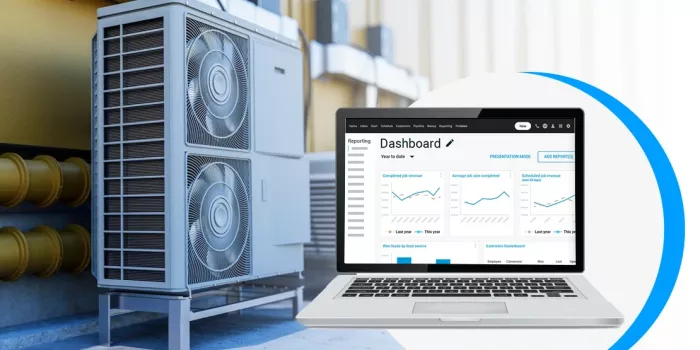When people think of industries poised for high growth, HVAC doesn’t usually crack the top ten. But if you’re paying attention to what’s quietly building just under the surface, you’ll see a massive opportunity taking shape—especially for small business owners. While tech bros chase the next social platform and consultants wax poetic about crypto’s comeback, HVAC companies are out here raking in solid profits, quietly hiring, and steadily expanding.
This surge isn’t just about weather extremes or new buildings. It’s about how a once-sleepy trade is turning into a dynamic, software-driven, highly specialized market—one that’s suddenly looking very attractive to savvy business owners looking for both stability and scale.
The Demand Problem No One’s Solving Fast Enough
HVAC demand isn’t just growing—it’s stretching the limits of who can deliver. As new home construction rebounds and commercial real estate adjusts to hybrid work, the pressure to retrofit and service outdated systems is climbing fast. Pair that with aging infrastructure in most cities and suburbs, and you’ve got a pipeline of work that isn’t going to dry up anytime soon.

The other half of the equation? Labor. Fewer young people are entering the trades. Licensing and training take time. And the guys who’ve been in this business for 30 years? Many are getting ready to retire. That means small HVAC businesses are either drowning in opportunity or scrambling to keep up—often both at the same time.
That imbalance is driving up the value of ownership in this space. A technician who turns their crew into a legit business can tap into recurring contracts, premium pricing, and strong referral networks. There’s real money here, but it requires organization, scale, and yes, some digital savvy.
And according to Statista’s HVAC industry data, the sector’s growth trajectory shows no signs of slowing.
Modern HVAC Companies Don’t Look Like What You’re Expecting
The old-school image of HVAC—gritty trucks, handwritten invoices, word-of-mouth marketing—is quickly fading. The newer generation of owners, especially those jumping in from other industries, are flipping the model. They’re running their businesses more like startups than local service shops, and it’s showing in the margins.
For instance, smart contractors are increasingly turning to the modern HVAC field service apps to automate their existing workflows. They're optimizing routes, automate billing and streamline everything from job tracking to customer communication through digitization. And they’re marketing smart, not just spraying ads across social media but actually understanding where leads come from and how to convert them. Whether it's residential installs or commercial service agreements, they’re using data to stay ahead of the competition.
One thing that’s helped fuel that transformation? Better logistics and fewer hurdles when it comes to parts and supply chain planning. Even cross-border shipping is less of a nightmare than it used to be, which means small business owners can often get parts faster and cheaper than the big corporate players who have too much red tape to move quickly.
It all adds up to a new playbook. The owner-operator model still exists, but it’s being shaped by speed, structure, and tools that didn’t even exist a decade ago.
The Software Shift That’s Quietly Driving It All
Behind a lot of these changes is one major upgrade: business owners are finally getting access to tools built for their actual needs. For years, most tech wasn’t designed with HVAC work in mind. You’d have to patch together invoicing software, use general scheduling apps, or worse—try to make sense of something built for enterprise operations when all you really needed was job tracking and routing.
That’s changed. Now there’s HVAC software designed for everyday workflows, with mobile interfaces built for techs in the field and real-time updates for the back office. These tools cut down on miscommunication. They reduce downtime between jobs. They let a team of three people perform like a team of eight, which changes everything when margins are tight.
One standout product in this space is HVAC software for small businesses, which is doing exactly what the name suggests—making it easier for new or growing operators to scale. These tools don’t just streamline dispatching and estimates. They give owners more control, faster insights, and fewer chances for work to fall through the cracks. For a service-based business, that’s often the difference between surviving and doubling revenue in a year.
And it’s not just about running a tighter ship. Having a real system in place raises your valuation. Buyers, investors, even banks—all of them want to see that you’re not running your business from a yellow legal pad and a gut feeling. The right software proves you're legit, and that matters whether you’re looking to expand or eventually sell.
Just as important? Staying compliant and protected while you scale. Tools are only one part of the equation—small businesses also need to follow practical safety and compliance tips to avoid legal and operational setbacks as they grow. Thinking ahead about worker safety, customer trust, and liability management is critical when you’re hiring fast or moving into new service areas.
Small businesses pairing HVAC software with smart leadership also benefit from better legal, safety, and compliance practices. As highlighted in Comet AI’s operational guide and Dippy AI’s workflow review, strong back-office systems dramatically reduce operational risk while improving customer trust.
Why Small Business Owners Are Jumping In Now
A lot of the people getting into HVAC today aren’t coming from traditional trades backgrounds. Some are ex-corporate. Some are real estate investors. Some are just entrepreneurs who’ve done the math and realized there’s a lot more long-term security in maintaining America’s infrastructure than in launching the next productivity app.
They’re not necessarily crawling under houses themselves—they’re hiring people who do. But they’re bringing leadership, organization, and an understanding of customer experience that transforms how the service gets delivered.
It’s not easy money, but it’s steady money. And in a world where volatility seems baked into everything—from crypto swings to online ads getting more expensive—it’s appealing to have a business where people actually need what you sell. Not want. Need. Because when the AC breaks in August, no one’s waiting for a better deal. They’re paying to fix it right now.
As Forbes explains in its HVAC industry outlook, modernization, sustainability demands, and smarter buildings will continue driving long-term demand for skilled HVAC operators.
Looking Ahead: Steady Growth, Smarter Tools, Real Opportunity
HVAC isn’t a bubble, it’s a realignment. A traditionally undervalued trade is becoming one of the most stable and scalable small business categories in the country.
Business owners who invest in:
- Better systems
- Stronger teams
- Smart marketing
- Skilled technicians
- Purpose-built HVAC software
…will be the ones dominating the market in the next five years.
The future of small business may not be in a mobile app or AI startup. It might be rolling up in a branded service van — on time, professionally scheduled, software-powered, and ready to work.
Whether you're exploring career paths or looking for a smart business investment, HVAC deserves a much closer look.
Post Comment
Be the first to post comment!





